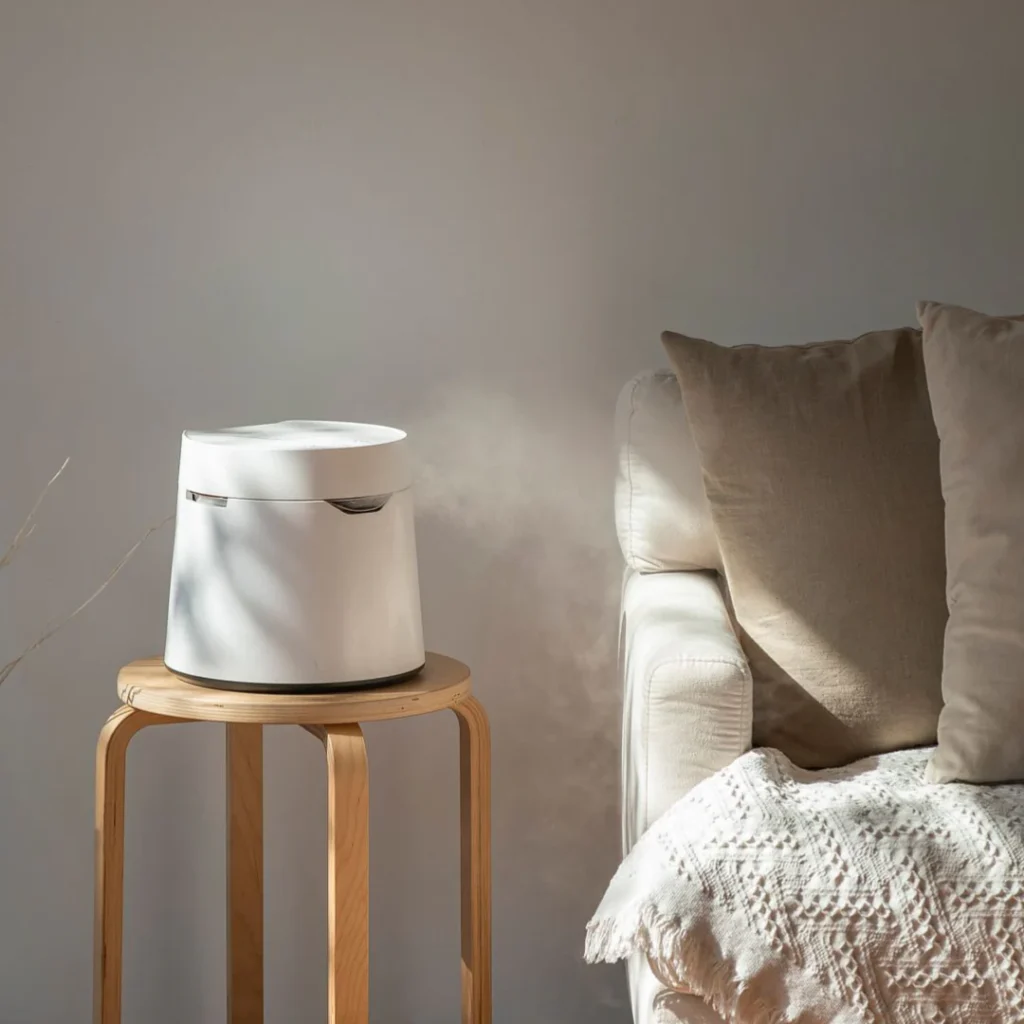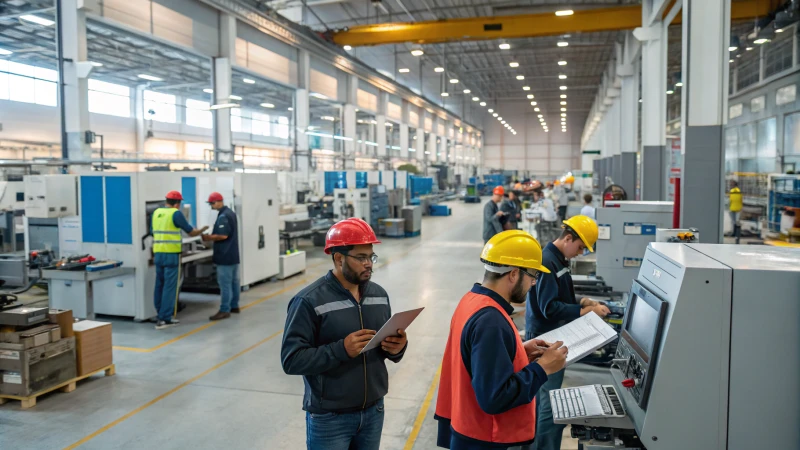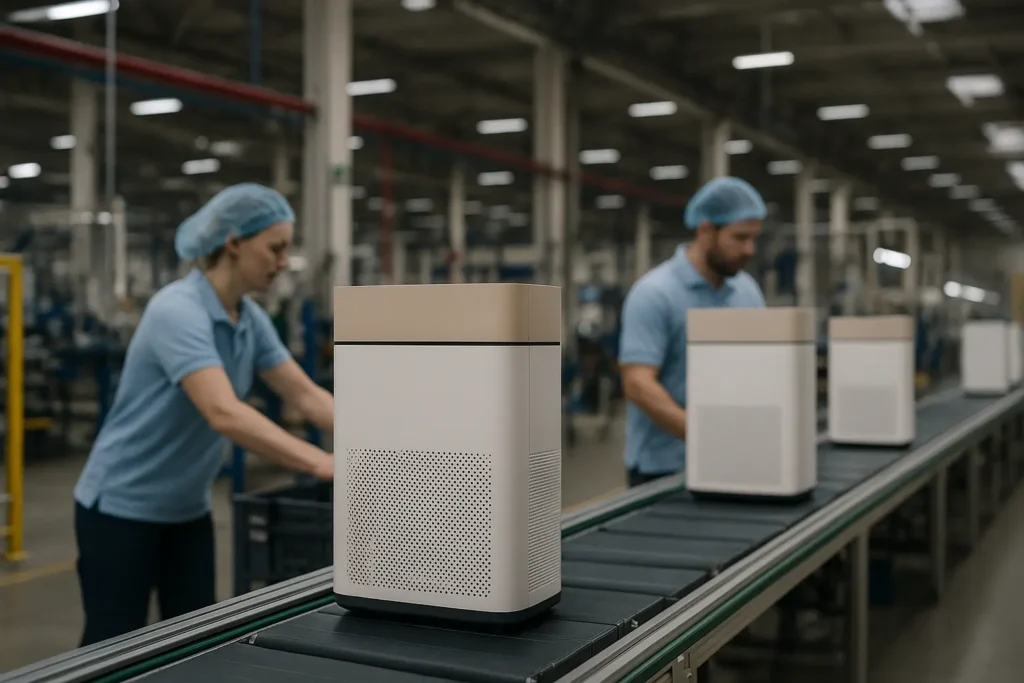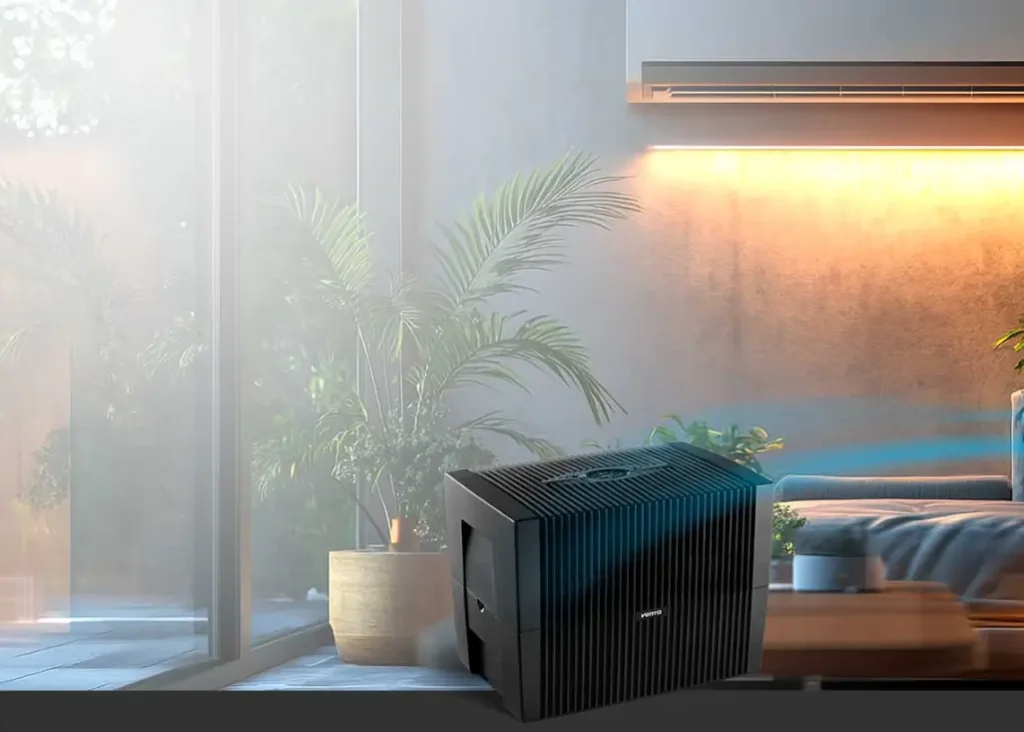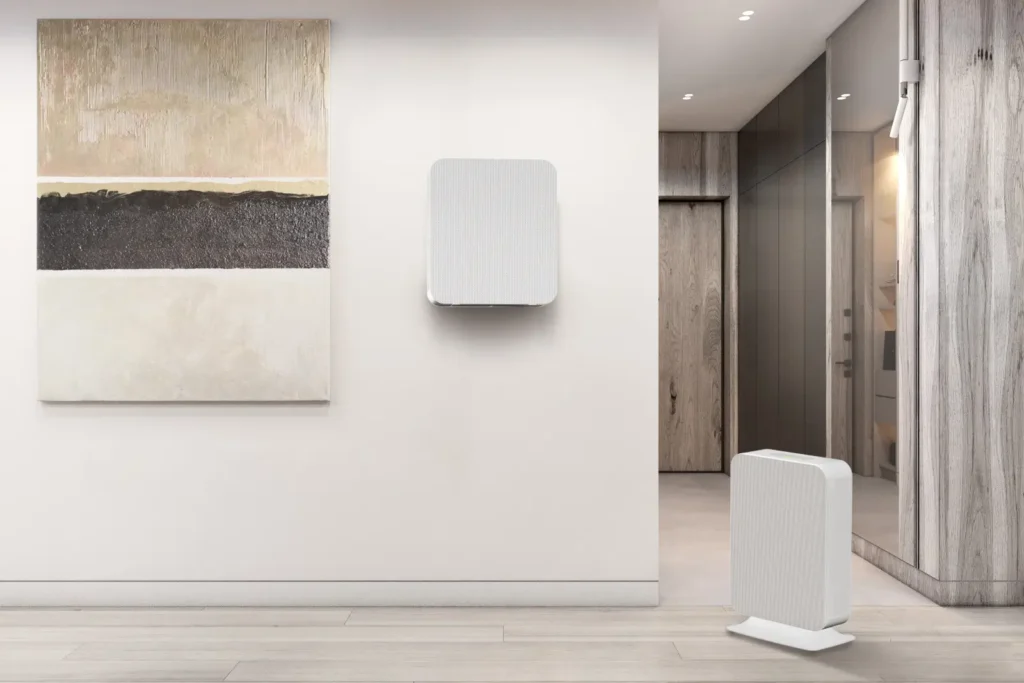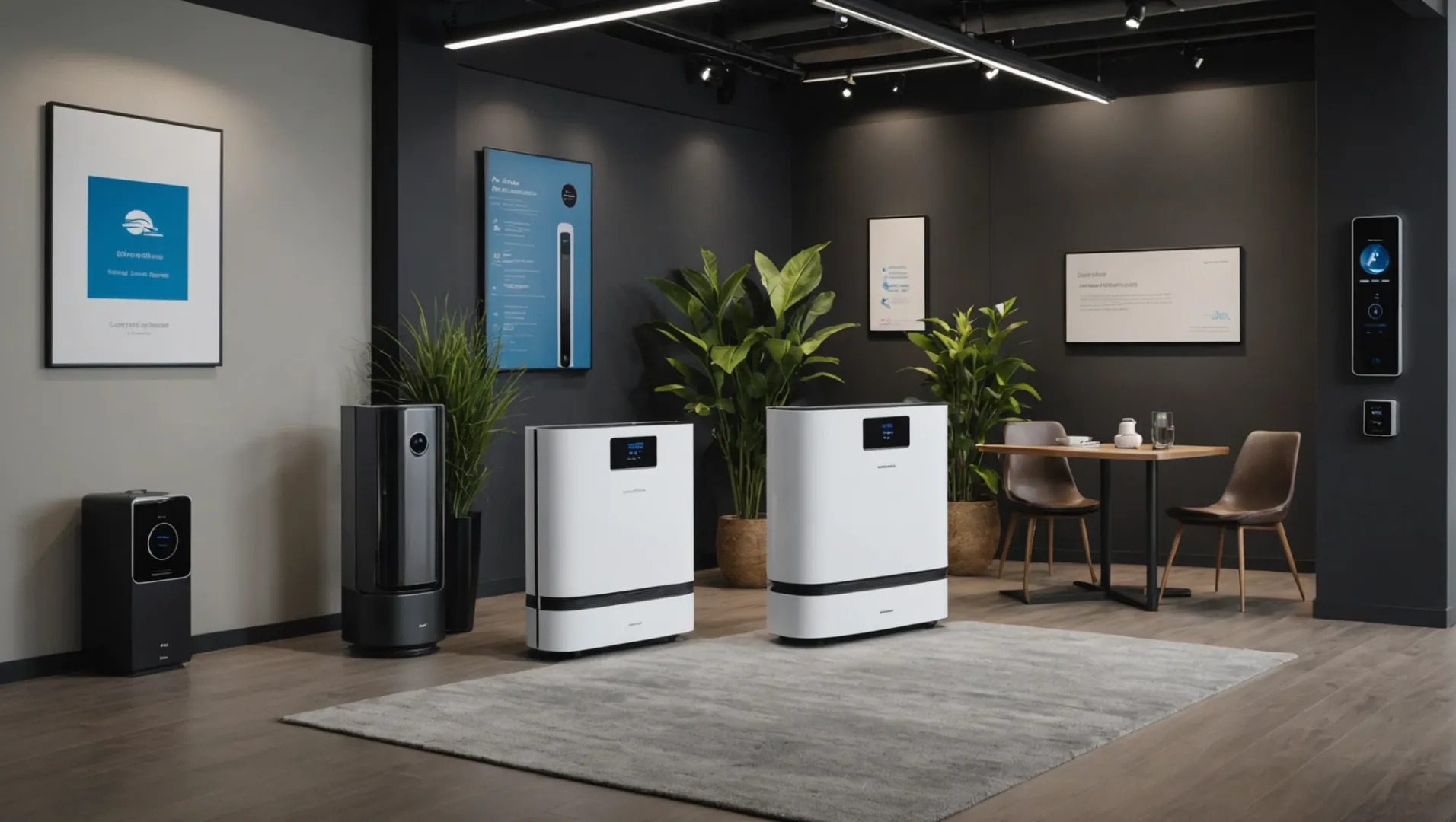
Dans ma quête d'un air plus pur, j'ai découvert que pour trouver la meilleure affaire sur un purificateur d'air, il ne suffit pas de regarder les étiquettes de prix. Il s'agit de comprendre ce qui se cache derrière ces chiffres.
Pour comparer efficacement les prix des purificateurs d'air de différents fournisseurs, concentrez-vous sur des caractéristiques clés telles que CADRLe niveau de bruit et le type de filtre. Veillez à évaluer des spécifications similaires pour effectuer une comparaison équitable, en tenant compte à la fois du coût et des performances.
Bien que le prix soit un élément crucial, la compréhension des caractéristiques des purificateurs d'air peut vraiment faire pencher la balance en faveur de votre décision d'achat. Rejoignez-moi pour découvrir ce qui compte vraiment !
Le CADR est la caractéristique la plus importante à comparer.Vrai
Le CADR mesure l'efficacité des purificateurs d'air, ce qui est essentiel pour l'évaluation des performances.
Quelles sont les caractéristiques à privilégier pour comparer les purificateurs d'air ?
Pour choisir le bon purificateur d'air, il faut prêter une attention particulière aux caractéristiques spécifiques qui influent sur les performances et la valeur de l'appareil.
Lorsque vous comparez les purificateurs d'air, concentrez-vous sur les points suivants CADRLes filtres à air sont conçus pour offrir une qualité d'air optimale et un confort d'utilisation optimal, grâce à des fonctions intelligentes telles que les niveaux de bruit, les types de filtres et d'autres fonctions intelligentes.
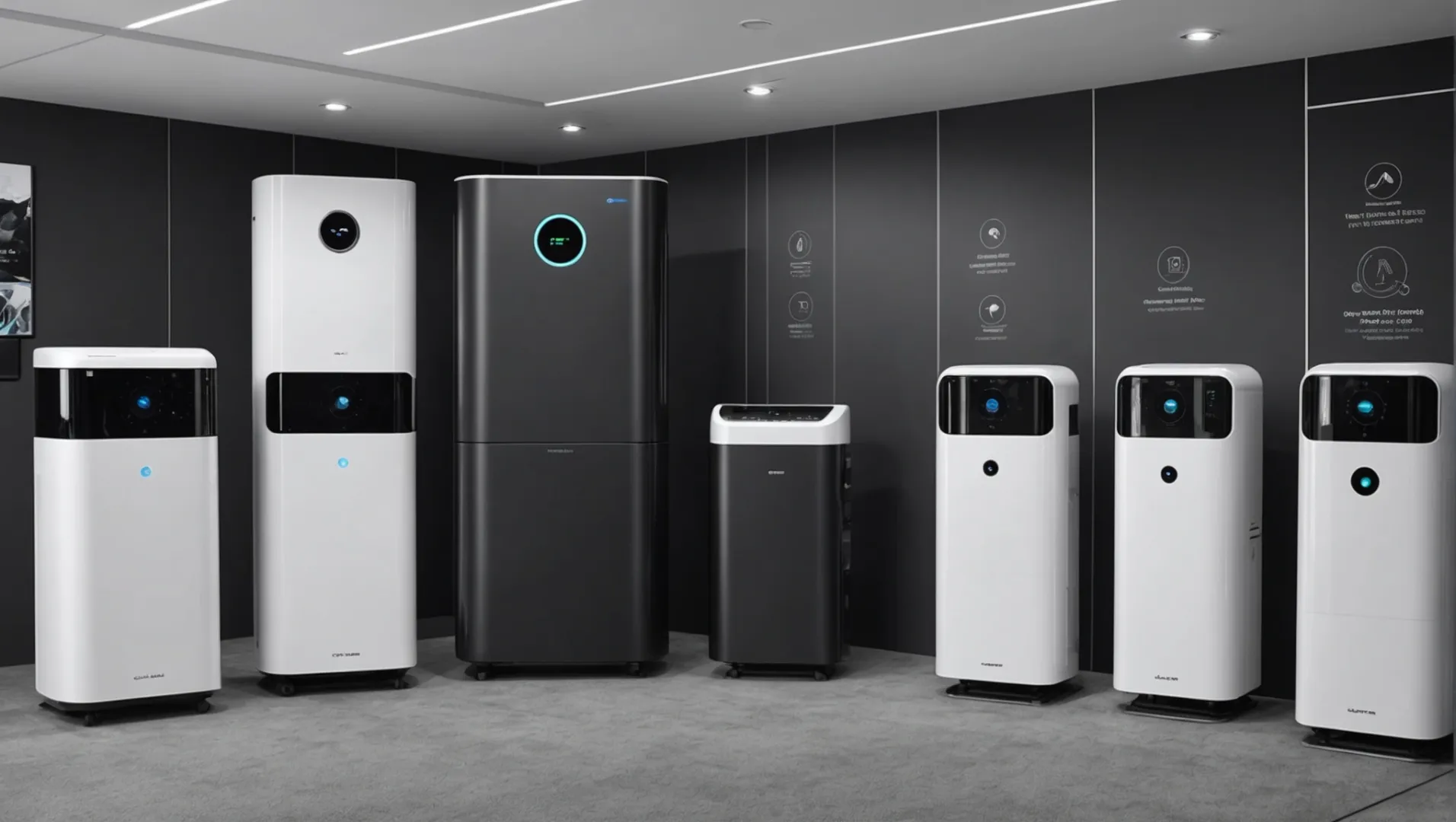
Comprendre CADR et son importance
Le taux de distribution d'air pur (CADR) est une mesure essentielle lors de l'évaluation des purificateurs d'air. Il indique le volume d'air filtré qu'un purificateur d'air produit par minute, ce qui détermine l'efficacité avec laquelle il nettoie une pièce. Un CADR signifie une purification plus rapide de l'air.
Comparaison CADR entre des modèles présentant des caractéristiques similaires en termes de taille de pièce vous aide à déterminer quel appareil offre les meilleures performances. N'oubliez pas, correspondant à la CADR1 à la taille de votre pièce est essentielle pour une purification efficace.
Évaluation des niveaux de bruit
Le niveau de bruit peut avoir un impact significatif sur votre confort, en particulier si le purificateur d'air est utilisé dans une chambre à coucher ou un bureau. Vérifiez les niveaux de décibels indiqués par le fabricant. Modèles offrant Technologie d'annulation des décibels2 peut offrir un fonctionnement plus silencieux, améliorant votre environnement sans bruit gênant.
| Modèle | Niveau de bruit (dB) |
|---|---|
| Modèle A | 40 dB |
| Modèle B | 50 dB |
| Modèle C | 35 dB |
Les différents types de filtres
Le type de filtre joue un rôle essentiel dans les polluants que le purificateur d'air peut éliminer. Les filtres les plus courants sont les suivants HEPALes filtres à oxygène, à charbon actif et à rayons UV. Chacun d'entre eux a une fonction différente :
- HEPA Filtres : Capture des particules aussi petites que 0,3 micron, y compris le pollen, la poussière et la fumée.
- Filtres à charbon actif : Éliminer les odeurs et les gaz polluants.
- Filtres UV : Tue les bactéries et les virus.
Évaluer quels types de filtres3 s'alignent sur vos besoins spécifiques, comme la réduction des allergies ou l'élimination des odeurs.
Fonctionnalités intelligentes supplémentaires
Les purificateurs d'air modernes sont équipés de fonctions intelligentes telles que des capacités IoT pour le contrôle à distance, des réglages basés sur des capteurs et l'intégration avec des systèmes domotiques. Des fonctionnalités telles que la surveillance de la qualité de l'air en temps réel ou les commandes par application peuvent offrir une commodité et une fonctionnalité importantes.
Examinez si ces caractéristiques intelligentes4 sont essentiels à votre mode de vie et comment ils peuvent améliorer la convivialité et l'efficacité globales.
Un CADR plus élevé signifie une purification de l'air plus rapide.Vrai
Le CADR mesure le volume d'air filtré par minute, ce qui influe sur la vitesse.
Les filtres HEPA éliminent les odeurs de l'air.Faux
Les filtres HEPA capturent les petites particules mais n'éliminent pas les odeurs.
Pourquoi est-il important d'évaluer les technologies spécifiques aux fournisseurs ?
Comprendre les technologies uniques proposées par les fournisseurs peut avoir un impact considérable sur votre décision d'achat.
L'évaluation des technologies spécifiques aux fournisseurs est cruciale car elle influence la qualité des produits, la rentabilité et l'innovation. En comprenant ces offres uniques, vous pouvez prendre des décisions éclairées qui correspondent à vos besoins et à vos objectifs commerciaux.

Comprendre les offres technologiques uniques
Lorsque l'on compare les purificateurs d'air, il ne s'agit pas seulement du coût initial ou des caractéristiques standard telles que CADR (Clean Air Delivery Rate) et le niveau de bruit. Les technologies propres à un fournisseur peuvent offrir des avantages uniques qui distinguent un produit des autres. Par exemple, la technologie d'annulation des décibels de HisoAir réduit considérablement le bruit, ce qui peut être un facteur décisif pour les clients qui privilégient un fonctionnement silencieux. Cette innovation peut justifier un prix plus élevé en raison de sa valeur ajoutée.
Le rôle de l'innovation dans le rapport coût-efficacité
L'innovation des fournisseurs conduit souvent à des solutions plus rentables. Des technologies telles que la technologie des moteurs-tempête peuvent améliorer l'efficacité, réduire la consommation d'énergie et diminuer les coûts d'exploitation à long terme. En évaluant ces innovations, les entreprises peuvent déterminer si l'investissement initial se traduira par des économies au fil du temps. Il est important de peser les avantages technologiques5 par rapport au prix pour garantir un investissement judicieux.
Établir des relations solides avec les fournisseurs
Comprendre et exploiter les technologies propres aux fournisseurs peut également favoriser des partenariats plus solides. Lorsque les fournisseurs constatent que vous appréciez leurs innovations, cela peut conduire à de meilleures négociations de prix et à de meilleures collaborations, en particulier dans les domaines suivants ODM (Original Design Manufacturer). Demande de nomenclature (BOM) des fournisseurs lors du traitement de volumes importants permet une comparaison transparente des coûts et met en évidence tout avantage technologique unique.
| Fonctionnalité | Fournisseur A | Fournisseur B |
|---|---|---|
| CADR | 300 m³/h | 280 m³/h |
| Niveau de bruit | 45 dB | 50 dB |
| Annulation des décibels | Oui | Non |
| Type de filtre | HEPA | Carbone |
| Une technologie de moteur innovante | Oui | Non |
Garantir un avantage concurrentiel
Enfin, l'évaluation de ces technologies permet à votre chaîne d'approvisionnement de rester compétitive. Un fournisseur disposant d'une technologie supérieure peut vous fournir des produits plus performants ou présentant des caractéristiques uniques, ce qui vous donne un avantage sur le marché. Cet avantage concurrentiel est essentiel pour maintenir la satisfaction des clients et assurer la réussite à long terme de l'entreprise.
En vous concentrant sur les technologies propres aux fournisseurs, vous améliorez non seulement votre offre de produits, mais vous renforcez également votre position sur le marché.
Les technologies spécifiques aux fournisseurs peuvent réduire les coûts opérationnels.Vrai
Des innovations telles que la technologie des moteurs de tempête améliorent l'efficacité et réduisent les coûts.
L'évaluation des technologies des fournisseurs n'a pas d'incidence sur la qualité des produits.Faux
La compréhension de ces technologies influe sur la qualité, la rentabilité et l'innovation.
Comment le coût total influence-t-il votre décision d'achat d'un purificateur d'air ?
Lors du choix d'un purificateur d'air, il est essentiel de prendre en compte le coût total, et pas seulement le prix initial.
Le coût total d'un purificateur d'air comprend le prix d'achat, les frais d'entretien et les coûts de fonctionnement. L'évaluation de tous ces facteurs vous permet de choisir un modèle qui correspond à votre budget à long terme tout en répondant à vos besoins en matière de qualité de l'air.
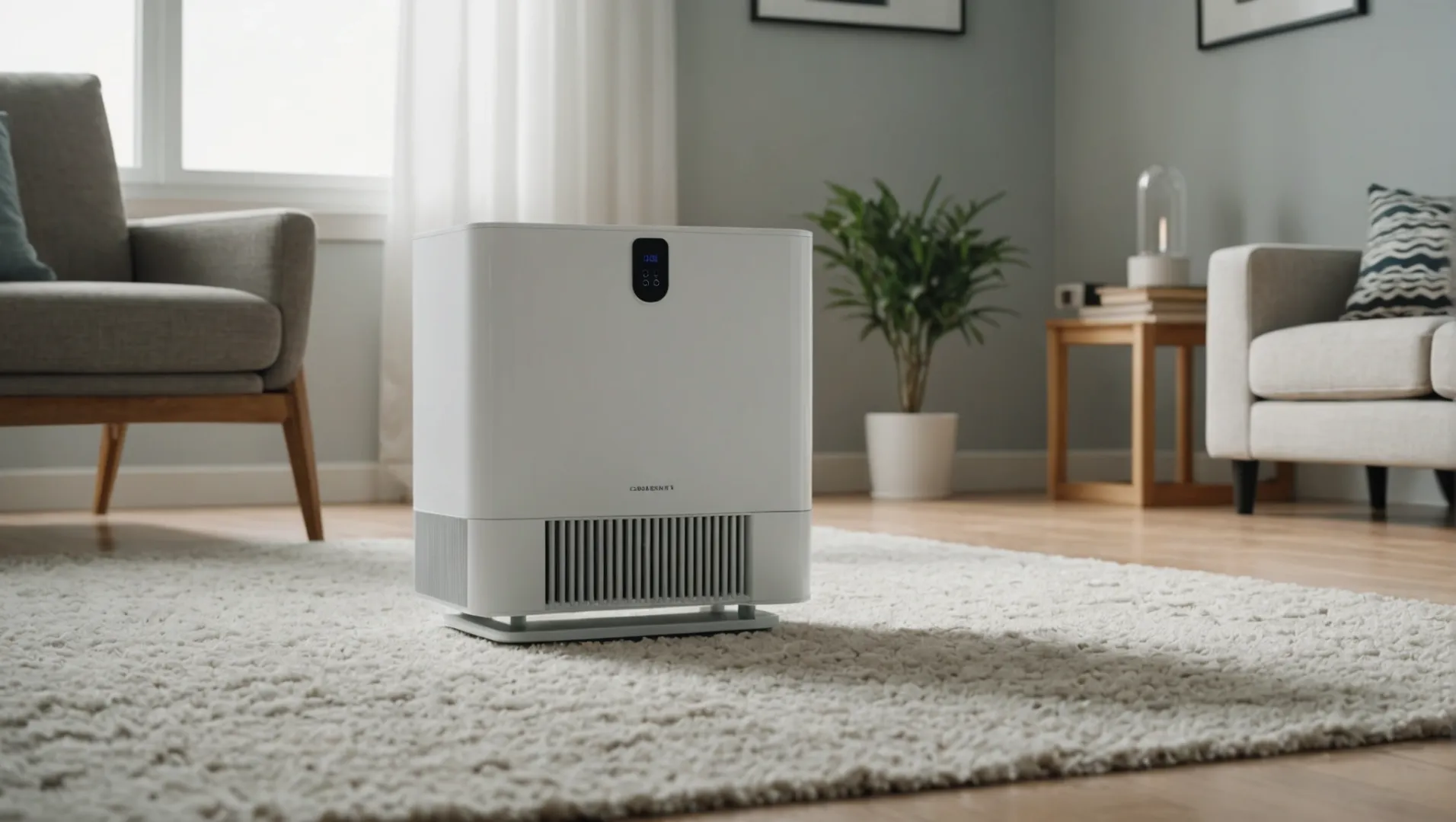
Comprendre les éléments du coût total
Lors de l'évaluation des purificateurs d'air, il faut tenir compte de trois principaux éléments de coût :
- Prix d'achat initial: Il s'agit du coût initial que vous payez pour posséder le purificateur d'air. Il varie considérablement en fonction de caractéristiques telles que CADR (Clean Air Delivery Rate), le niveau sonore et le type de filtre. Un taux CADR peut signifier un prix plus élevé, mais aussi de meilleures performances.
- Dépenses d'entretien: Un entretien régulier est essentiel pour obtenir des performances optimales. Prenez en compte le coût du remplacement des filtres, qui peut varier considérablement en fonction de la marque et du modèle du purificateur. Certains modèles proposent des filtres permanents qui doivent être nettoyés au lieu d'être remplacés, ce qui permet d'économiser de l'argent au fil du temps.
- Coûts opérationnels: Il s'agit de la consommation d'électricité. Les modèles à haut rendement énergétique peuvent avoir un coût initial plus élevé, mais ils permettent d'économiser de l'argent à long terme en réduisant les factures d'énergie.
Le rôle des technologies spécifiques aux fournisseurs
Certains fournisseurs proposent des technologies uniques qui peuvent avoir un impact sur le coût total. Par exemple, HisoAir's6 La technologie d'annulation des décibels ne réduit pas seulement le bruit, mais peut également contribuer à réduire la consommation d'énergie. De même, la technologie du moteur Storm pourrait améliorer l'efficacité du flux d'air, ce qui pourrait réduire les coûts d'exploitation.
Importance de l'évaluation des coûts dans le temps
Pour évaluer le coût total, il faut aller au-delà des dépenses immédiates. Un modèle dont le prix d'achat est bas mais dont les coûts d'entretien sont élevés peut s'avérer plus onéreux à long terme qu'un modèle plus coûteux dont les besoins d'entretien sont minimes.
| Élément de coût | Exemples de considérations |
|---|---|
| Prix d'achat initial | Des caractéristiques telles que CADRles capacités de l'IdO et les types de capteurs |
| Dépenses d'entretien | Fréquence et coûts de remplacement des filtres |
| Coûts opérationnels | Consommation d'énergie et taux d'efficacité |
Tirer parti du coût total pour mieux négocier avec les fournisseurs
Si vous avez un volume de commandes important ou si vous êtes impliqué dans un projet de développement de l'entreprise, vous pouvez vous adresser à la Commission. ODM projet, en demandant une BOM (La liste des nomenclatures des fournisseurs peut être avantageuse. Cette transparence permet des négociations de prix plus agressives et mieux informées.
En évaluant l'ensemble de ces facteurs, vous vous assurez que votre choix de purificateur d'air correspond à la fois à votre budget et à vos objectifs en matière de qualité de l'air, ce qui se traduit en fin de compte par une expérience d'achat plus satisfaisante.
Un CADR plus élevé indique une meilleure performance du purificateur d'air.Vrai
Le CADR mesure l'efficacité d'un purificateur d'air à éliminer les polluants.
Les filtres permanents coûtent toujours plus cher que les filtres remplaçables.Faux
Les filtres permanents permettent d'économiser de l'argent au fil du temps, car ils doivent être nettoyés et non remplacés.
Quel rôle jouent les avis et les évaluations dans votre processus de comparaison ?
Sur le marché animé des purificateurs d'air, les avis et les évaluations vous guident et vous aident à prendre une décision d'achat judicieuse.
Les avis et les évaluations fournissent des expériences d'utilisateurs de première main et des avis d'experts, vous aidant à évaluer la fiabilité et les performances du produit. Ils mettent en évidence les problèmes et les avantages courants, ce qui permet de prendre des décisions en connaissance de cause.

Comprendre l'influence des commentaires des utilisateurs
À l'ère du numérique, les avis et les évaluations font désormais partie intégrante du processus d'achat. Ils offrent un aperçu authentique des personnes qui ont déjà utilisé le produit. En les prenant en compte, vous pouvez mieux comprendre les performances réelles d'un purificateur d'air, son potentiel et son efficacité. questions7et des caractéristiques remarquables.
Types d'évaluations : Utilisateur ou expert
-
Avis des utilisateurs: Ils fournissent un retour d'information authentique de la part d'utilisateurs quotidiens. Ils mettent souvent l'accent sur des aspects pratiques tels que la facilité d'utilisation, les problèmes de maintenance ou les expériences du service clientèle.
-
Avis d'experts: Souvent publiés sur des sites web spécialisés dans la technologie ou destinés aux consommateurs, ces avis approfondissent les spécifications techniques et proposent des comparaisons avec des modèles similaires. Ils peuvent explorer des aspects tels que CADR8 et la longévité des filtres.
Évaluer les revues de manière critique
Tous les avis ne sont pas égaux. Certains peuvent être biaisés ou motivés. Il est donc essentiel de :
- Rechercher des modèles: Si plusieurs avis font état d'une mauvaise qualité de fabrication ou d'un fonctionnement bruyant, il peut s'agir de préoccupations légitimes.
- Vérifier la source: Vérifiez la crédibilité de la plateforme d'évaluation. Les sources dignes de confiance présentent souvent un mélange de commentaires positifs et négatifs.
Les notations : Vue d'ensemble
Les évaluations donnent un aperçu de la satisfaction des clients. Un produit bien noté est généralement synonyme de fiabilité et d'efficacité. Cependant, il est essentiel de :
- Prenez en compte le nombre d'évaluations. Une note de cinq étoiles attribuée par dix utilisateurs est moins fiable qu'une note attribuée par mille utilisateurs.
- Recherchez les évaluations récentes pour vous assurer que les commentaires reflètent le modèle ou la version actuelle du purificateur d'air.
Tirer parti de la réputation dans la prise de décision
Puisque vous comparez avec différents fournisseurs, vous pouvez dire au fournisseur A que vous comparez le prix et la qualité avec le fournisseur B, ce qui exercera une pression sur votre fournisseur et vous permettra d'obtenir un meilleur prix. Mais pour prendre votre décision, vous devez recueillir des informations sur la réputation du fournisseur potentiel, ce qui est essentiel pour réduire le risque.
Conclusion
En comparant le coût à la qualité et à la technologie, je m'assure d'un achat intelligent qui répond à mes besoins en matière de qualité de l'air.
-
Assure une purification optimale de l'air en adaptant le CADR à la taille de la pièce.. : Cet article présente les trois étapes essentielles pour déterminer la taille appropriée d'un purificateur d'air et explique comment une mesure appelée CADR peut être utile à cet égard. ↩
-
Découvrez les technologies pour un fonctionnement plus silencieux des purificateurs d'air... : Les purificateurs d'air HiSo utilisent la technologie Decibel Cancellation™, permettant l'utilisation de filtres moins denses. Les particules chargées adhèrent plus facilement, ce qui réduit le besoin.... ↩
-
Aide à identifier les types de filtres les mieux adaptés à vos besoins.. : Quels sont les différents types de filtres à air ? - Filtres HEPA - Filtres à rayons UV - Filtres électrostatiques - Filtres lavables - Filtres à média - Filtres en verre filé ... ↩
-
Découvrez comment des fonctions intelligentes peuvent améliorer la facilité d'utilisation des purificateurs d'air.. : Pourtant, un purificateur bien conçu peut capturer pratiquement tous les allergènes en suspension dans l'air, tels que le pollen et les spores de moisissures, ainsi que les bactéries, les virus et les ... ↩
-
Découvrez comment les innovations réduisent les coûts et améliorent l'efficacité des purificateurs d'air.. : Cette approche innovante permet de réduire simultanément les particules, de la taille des nanoparticules à celle des plus grandes, jusqu'à 99%, et d'éliminer ... ↩
-
Découvrez comment cette technologie permet de réduire le bruit et d'économiser de l'énergie... : Les purificateurs d'air HiSo utilisent la technologie Decibel Cancellation™, permettant l'utilisation de filtres moins denses. Les particules chargées adhèrent plus facilement, ce qui réduit le besoin.... ↩
-
Découvrez les pièges potentiels avant d'acheter un purificateur d'air.. : Un purificateur d'air mal entretenu aura des filtres sales ou bouchés, des moteurs qui fonctionnent mal et d'autres problèmes qui affectent son fonctionnement général. ↩
-
Découvrez pourquoi le CADR est crucial pour l'efficacité des purificateurs d'air.. : Le choix d'un purificateur d'air avec un indice CADR élevé garantit qu'il nettoie efficacement l'air des polluants, tels que la poussière, le pollen, la fumée, ... ↩


